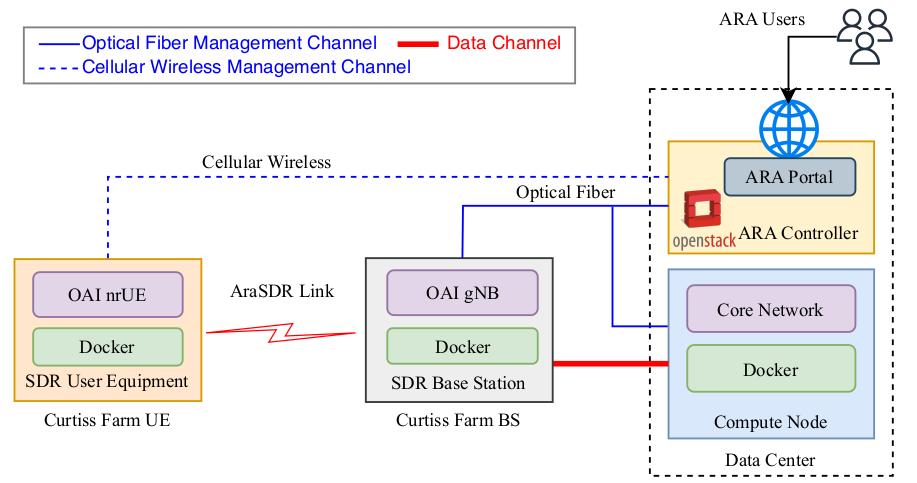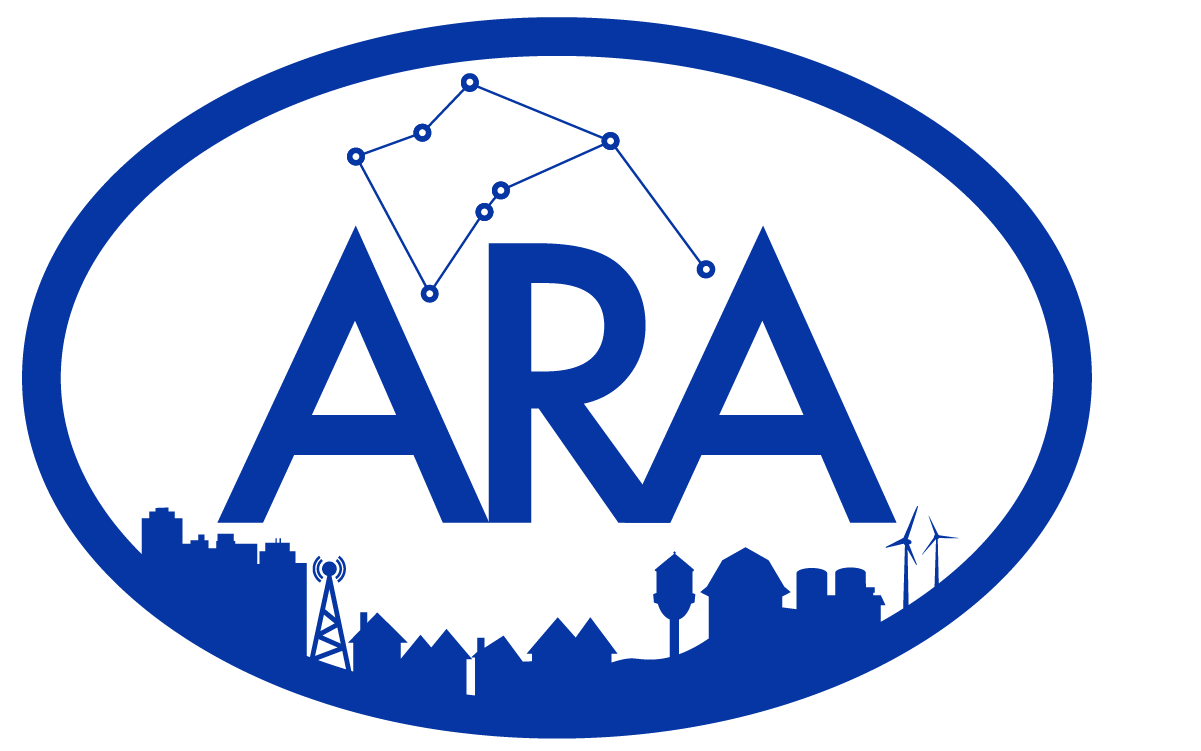While 5G is increasingly being deployed across the world and research in 6G is gaining momentum, realizing the vision of next-generation (NextG) wireless services such as ultra-reliable, low-latency communications (URLLC) for control and extended reality (XR) applications requires radical innovations across the whole network stack from the physical layer to MAC layer and above and end-to-end across radio access networks and core networks. In addition, the emergence of open-source 5G platforms such as OpenAirInterface and srsRAN enables whole-stack programmability and end-to-end softwarization of cellular systems from user equipment (UE) to base stations and core networks. For whole-stack, end-to-end research and innovation in NextG and for fully-programmable, over-the-air experimentation, ARA features at-scale deployment of advanced software-defined radios (SDRs) both indoor and in outdoor, real-world agriculture and rural settings, as shown in the figures below.


Key Features of ARA Open-Source SDR Infrastructure
- End-to-End Open-Source NextG Experimentation: ARA provides users with seamless experimental workflow through the ARA Portal, as shown in the figure below. It enables users to reserve compute nodes and create docker containers using custom-built docker images with open-source 5G software stacks for UE, BS, and core networks. The custom-built docker images include OAI nrUE, OAI gNB, OAI-cn5g, srsgNB, srsUE and srsEPC, and users can also bring their own docker images for experimentation. New ARA users can check the ARA User Manual for open-source 5G experiments to get started.

- Fully Programmable, End-to-End Outdoor SDR Infrastructure in Real-World Settings: ARA’s outdoor SDR infrastructure is the first-of-its-kind living lab, providing real-world fidelity and end-to-end full programmability from UEs to gNodeBs and core networks. ARA deploys USRP N320s at its BSes and USRP B210s at its UEs across crop and livestock farms as well as rural cities and communities. To boost signal strength, ARA employs performant RF front-ends with power amplifiers and low-noise amplifiers both BSes and UEs. ARA deploys open-source 5G core networks on commercial off-the-shelf (COTS) servers in the ARA data center, and the core networks connect to the radio access network (RAN) via high-capacity fiber or wireless back-haul. ARA currently supports end-to-end, programmable SDR-based experiments with openairinterface5G software stack in its outdoor infrastructure, and the support for srsRAN is expected in the near future. (More detailed information about the outdoor SDR infrastructure can be found here.)
- Indoor Over-the-Air (OTA) Sandbox Environment: ARA helps kickstart your open-source NextG development by providing an SDR-based indoor OTA environment where users have the opportunity to test their experiments before moving them to the ARA outdoor SDR infrastructure. The sandbox currently features 50 USRP B210s. Each of the USRPs is connected to 16GB RAM and 12 Core Intel NUC via a high-speed USB 3.0 cable for IQ sample streaming. Users have the flexibility to choose from any of the available USRPs for their open-source NextG experiments. Both openairinterface5G and srsRAN experiments are currently supported in the sandbox environment. (More detailed information about the ARA sandbox can be found here.)
Enabled Experiments
With at-scale deployment of full-programmable SDRs in its indoor sandbox and outdoor infrastructure, ARA enables high-fidelity wireless channel measurement in real-world settings, and it supports end-to-end, whole stack research and innovation in NextG using open-source platforms. Example 5G experiments can be found here, and ARA-enabled O-RAN research is explained in detail here.
